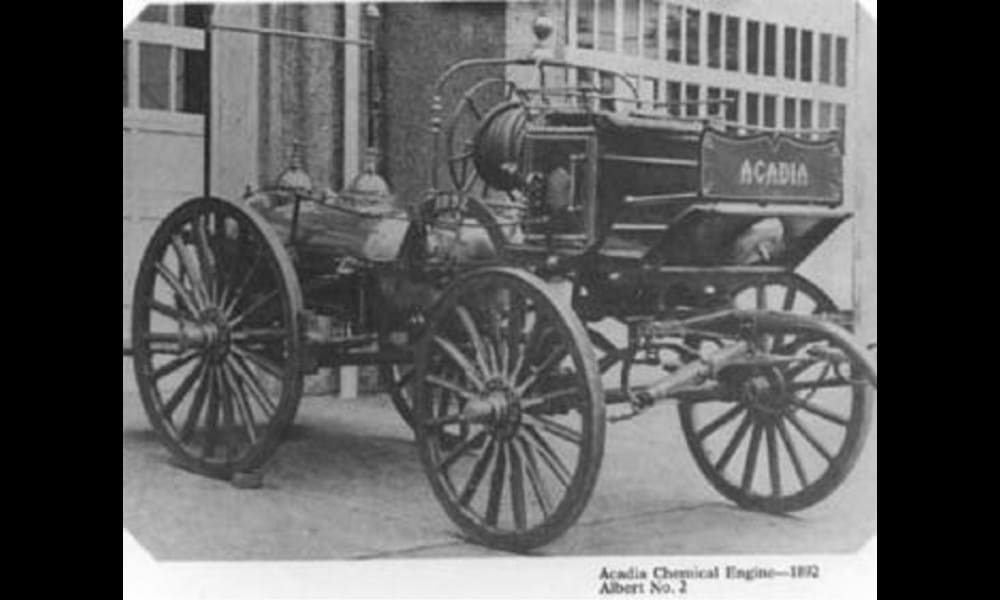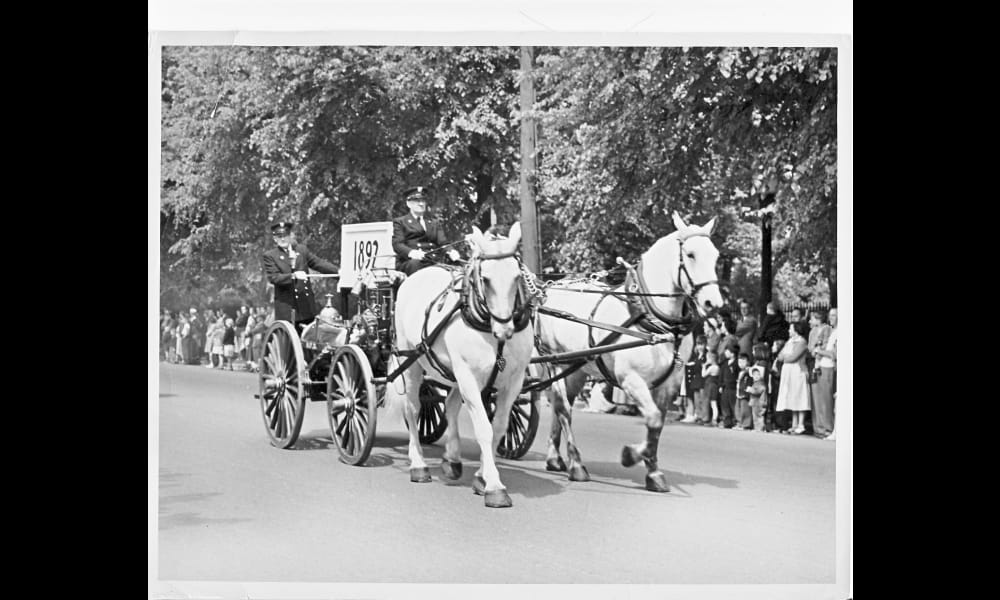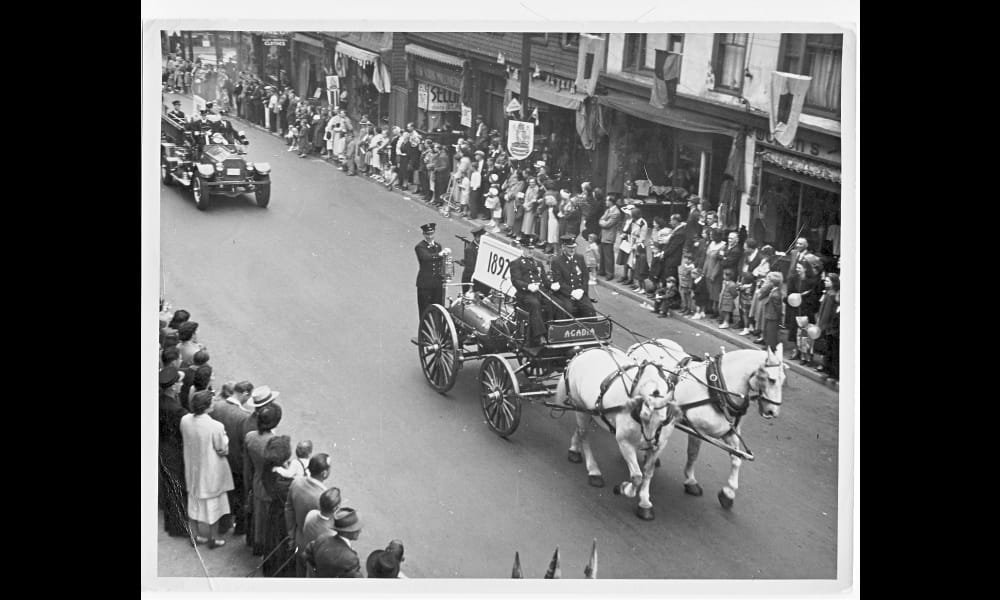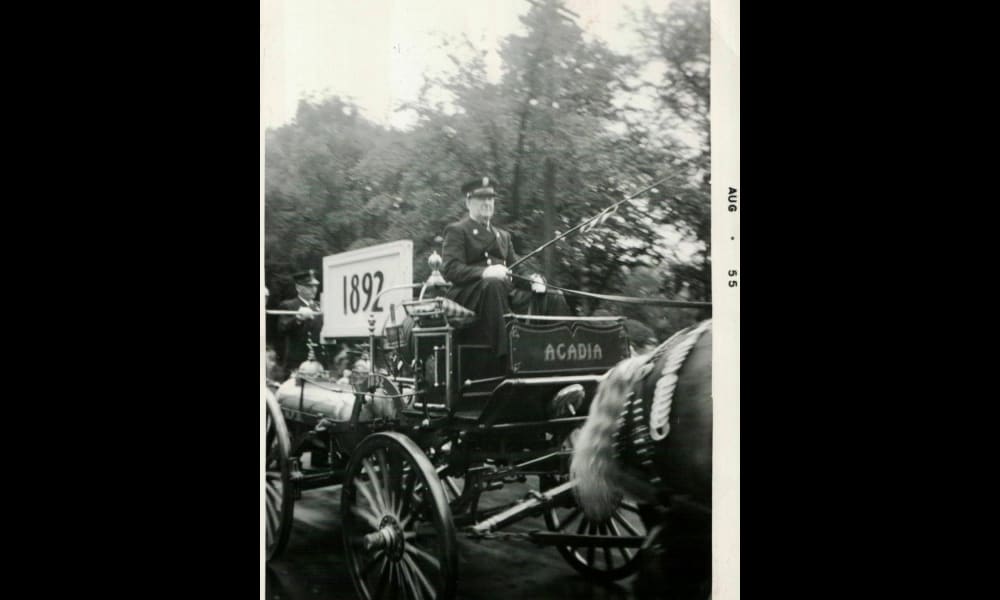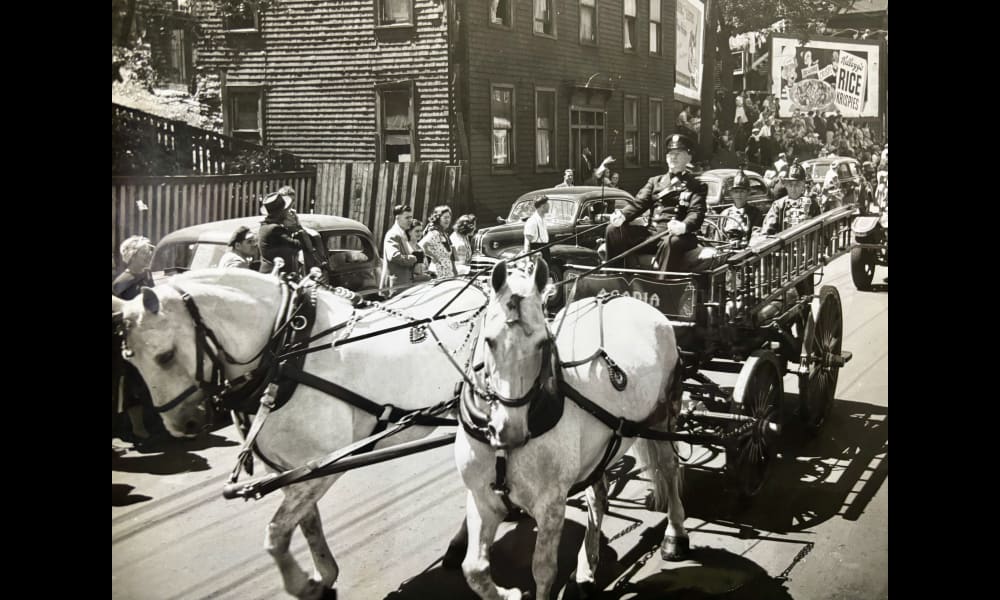1892 Babcock Chemical No2 ~ Acadia
In 1892, the City of Halifax procured its first chemical fire engine, marking a significant technological advancement in firefighting capability on the peninsula.
On October 5, 1892, the City Council accepted a recommendation from the Board of Firewards to purchase a Holloway Chemical Engine for $2,450. This decision followed a competitive tendering process involving several companies:
• Holloway Chemical Fire Engine Co.,
• Fire Extinguisher Mfg. Co.,
• Lindgren Mahan Co.,
• Waterous Engine Works, and
• Truro Foundry & Machine Co.
Holloway's bid was selected due to alignment with the Board’s preferences.
Chemical engines operated on a soda-acid principle. A mixture of sulphuric acid and bicarbonate of soda created carbon dioxide gas, which pressurized a tank and forced the solution through a hose and nozzle. These engines were especially suited for controlling small fires in confined areas, such as shopfronts, with minimal water damage to goods.
On September 24, 1895, a second chemical engine—a Babcock model—was acquired from H. H. Fuller & Co. after one of three tenders submitted on June 24 was accepted. The Board of Firewards confirmed it met their specifications. The Babcock engine saw its first recorded use at a fire on Gottingen Street on December 23, 1895.
These acquisitions were part of broader modernization efforts, which included purchasing a new Amoskeag steam fire engine and planning new engine houses, such as the one eventually built at West and James Streets in 1896.
~ From council minutes:
"4th October, 1892.
The Board of Fire Wards and Fire Commissioners beg to report on the matter of purchase of Chemical Fire Engine. They had before them offers from the following firms:
Holloway Chemical Fire Engine Co
Fire Extinguisher Mfg. Co., "Champion."
Lindgren Mahan Co.
Waterous Engine Works
Truro Foundry & Machine Co.
And decided to recommend that the City Council purchase a Holloway double 60 gal. tank Engine, at $2,450.
W. E. PICKERING, Chairman.
The following resolution is now introduced:
Resolved, that the report of the Fire Commisioner be received and adopted, and the Board be authorized to proceed with purchse of Holloway Chemical Engine, price $2,450 (two thousand four hundred and fifty dollars.) Moved by Alderman Foster, seconded by Alderman McFatridge. Motion put and passed. Aldermen
Wier and Pickering dissenting."
Source: Halifax Municipal Archives, Source
Chemical engines in Halifax during the 1890s, including the 1892 Holloway and the 1895 Babcock models, were used for rapid-response firefighting where water supply was limited or where water damage had to be minimized—especially in densely built commercial areas.
How Chemical Engines Were Deployed in Halifax:
1. Purpose and Role
-
First-in Response: Chemical engines were often the first apparatus deployed to small fires—especially in shops, warehouses, or dwellings—because they could begin suppression immediately without needing to connect to hydrants.
-
Minimize Water Damage: Unlike steam engines, which could dump hundreds of gallons of water, chemical engines used a controlled stream of pressurized chemical solution, ideal for preserving merchandise.
2. Chemical Reaction Mechanics
-
Operation Principle: Each engine carried tanks containing a solution of sodium bicarbonate (baking soda) mixed with water.
-
A separate bottle or canister held concentrated sulphuric acid, which, when released into the main tank, caused a vigorous reaction:
H2SO4+NaHCO3→CO2(gas)+H2O+NaHSO4 -
CO₂ Pressure: The carbon dioxide gas pressurized the tank and forced the liquid out through a hose and nozzle.
3. Crew Deployment
-
Typically operated by 2–4 firefighters, depending on the size.
-
Upon arrival:
-
The tank was tilted or inverted to release the acid into the solution.
-
Hoses were unreeled quickly.
-
One firefighter managed the nozzle, while others maneuvered the engine and monitored pressure.
-
4. Limitations and Use Cases
-
Tank Size: Could carry only 30 to 60 gallons of solution—ideal for small fires or to control spread before the steam engine arrived.
-
One-shot Activation: Once mixed, the reaction couldn’t be paused; the tank had to be recharged offsite, making coordination crucial.
-
Winter Conditions: The engines were popular in winter, since they didn’t rely on hydrants which could freeze.
5. Strategic Deployment in Halifax
-
Based on records, the Babcock chemical engine was housed centrally, likely at the Market Building or another key station, ready for downtown commercial fires.
-
Used in tandem with hose reels or steamers when fires escalated, often helping to protect exposures or prevent rekindling.


